Halloween Events in Sleepy Hollow Kick Off October 5
- Details
- Hits: 5415
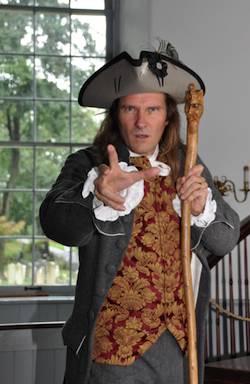 Halloween season in Sleepy Hollow Country kicks off in force on Saturday, Oct. 5, opening night of the tri-state area's largest fall events. Continuing for 25 selected evenings through Nov. 11, The Great Jack O' Lantern Blaze® is the Hudson Valley's biggest all-ages Halloween extravaganza. A small team of artists comes together to carve more than 5,000 jacks, many fused together in elaborate constructions such as life-size dinosaurs and eight-foot-tall working jack-o'lanterns-in-the-box, all lit up throughout the wooded walkways, orchards, and gardens of historic Van Cortlandt Manor in Croton-on-Hudson, N.Y. Also making its debut at this year's Blaze is the Museum of Pumpkin Art, the first ever exhibition space devoted to sculptural works inspired by (but not made from) pumpkins.
Halloween season in Sleepy Hollow Country kicks off in force on Saturday, Oct. 5, opening night of the tri-state area's largest fall events. Continuing for 25 selected evenings through Nov. 11, The Great Jack O' Lantern Blaze® is the Hudson Valley's biggest all-ages Halloween extravaganza. A small team of artists comes together to carve more than 5,000 jacks, many fused together in elaborate constructions such as life-size dinosaurs and eight-foot-tall working jack-o'lanterns-in-the-box, all lit up throughout the wooded walkways, orchards, and gardens of historic Van Cortlandt Manor in Croton-on-Hudson, N.Y. Also making its debut at this year's Blaze is the Museum of Pumpkin Art, the first ever exhibition space devoted to sculptural works inspired by (but not made from) pumpkins.
Washington Irving's macabre tale The Legend of Sleepy Hollow inspires Horseman's Hollow, a 13-night interactive haunted attraction at Philipsburg Manor in Sleepy Hollow, N.Y., recommended for ages 10 and up. Stocked with professional actors and state-of-the-art special effects, Horseman's Hollow has a high fear factor.
Irving's 'Legend,' recommended for ages 10 and up, brings the master storyteller Jonathan Kruk into the historic, candlelit interior of Sleepy Hollow's circa-1685 Old Dutch Church, where for 13 evenings he offers a dramatic re-telling of The Legend of Sleepy Hollow accompanied by live organ music. The Legend Behind the 'Legend' is a new, daytime experience at Washington Irving's Sunnyside in Tarrytown, N.Y. that highlights the author of the famous story.
All events are held rain or shine. Proceeds support Historic Hudson Valley, the Tarrytown-based private, non-profit educational organization which owns and operates the historic sites that host these events.
Ticket and date information
For Blaze, Horseman's Hollow, and Irving's 'Legend,' admissions are by advance purchase timed ticket.
Blaze dates are Oct. 5-6, 11-14, 17-20, 24-31, Nov. 1-3, 8-11. The first reservation is 7 p.m. on Oct. 5-6 and 6:30 p.m. for the other dates. Tickets are $16 for adults ($20 on Saturdays), $12 for children 3-17 ($16 on Saturdays), and free for children under 3 and Historic Hudson Valley members.
Horseman's Hollow dates are Oct. 5-6, 11-13, 18-20, 25-27, Nov. 1-2, with the first reservation at 7 p.m. Tickets are $20 ($25 on Saturdays). Historic Hudson Valley members receive a $5 per ticket discount.
Irving's 'Legend' dates are Oct. 5-6, 11-13, 18-20, 25-27, Nov. 1-2. Seating is very limited, and there are three performances each evening on the hour, beginning at 5pm (6:15pm Fridays). Tickets are $16 for adults, $12 for children under 18. Historic Hudson Valley members receive a $5 per ticket discount.
Legend Behind the 'Legend' takes place Wednesdays-Sundays in October, plus Columbus Day Monday, with the first tour at 10:30am. Tickets are $12 for adults, $10 for seniors, $6 for children 3-17, and free for those under 3 and Historic Hudson Valley members.
Buy tickets online at www.hudsonvalley.org or by calling 914-366-6900 ($2 per ticket surcharge for phone orders).
Details: The Great Jack O' Lantern Blaze
The Great Jack O' Lantern Blaze, which drew more than 80,000 visitors last year, features more than 5,000 illuminated, individually hand-carved jack o' lanterns. Elaborate single-pumpkin carvings and huge multi-jack o'lantern constructions are professionally lit throughout the landscape of Van Cortlandt Manor in various themed areas.
Favorites such as the Undersea Aquarium and walk-through Tunnel O' Pumpkin Love are joined this year by new installations including Venus Pumpkin Traps, an enormous sea serpent, a brontosaurus, and a pterodactyl. The brand new Museum of Pumpkin Art is the first ever exhibition space devoted to sculptural works inspired by (but not made from) pumpkins. The Museum of Pumpkin Art is made possible by the New York State Council on the Arts with the support of Governor Andrew Cuomo and the New York State Legislature.
Also new this year is Blaze: The Soundtrack Volume II. Building on the success of last year's soundtrack, Historic Hudson Valley teamed up with professional musician, radio personality, and Halloween fanatic Richard Christy to create a second volume of all-original music, selections of which will play throughout the event. The soundtrack is available as a CD at the event and also a digital download from iTunes and Google Play.
Creative Director Michael Natiello leads a small team of Historic Hudson Valley staff and local artists who carve. In addition, more than 1,000 volunteers help scoop and light the pumpkins. Blaze artists will be carving on site during the event. The Great Jack O' Lantern Blaze Shop offers a full bounty of Blaze-specific merchandise including hats, notepads, games, T-shirts, magnets, caps, mugs, and jewelry. Café Blazé, by Geordane's of Irvington, will offer culinary treats including soup, veggie chili, muffins, pumpkin cookies, and cider.
Van Cortlandt Manor is at 525 South Riverside Avenue, just off Route 9 in Croton-on-Hudson.
Details: Horseman's Hollow
Horseman's Hollow, a haunted experience in the heart of Sleepy Hollow, takes the tale of The Legend of Sleepy Hollow to its darkest extremes. Historic Philipsburg Manor transforms into a terrifying landscape ruled by the undead, the evil, and the insane, all serving the Headless Horseman himself.
Haunted house professional Lance Hallowell leads a crew of award-winning makeup and costume designers and a 40-member-strong cast of experienced actors to create an immersive, interactive, pleasantly terrifying experience, with state-of-the-spooky-art special effects.
Custom built set pieces and period-correct costumes help orient the experience in Philipsburg Manor's traditional time period of the mid-1700s. Lighting is by Emmy award-winning designer Deke Hazirjian of New York City Lites.
Philipsburg Manor is at 381 North Broadway (Route 9) in Sleepy Hollow.
Details: Irving's 'Legend'
Master storyteller Jonathan Kruk offers a dramatic re-telling of Washington Irving's classic tale, The Legend of Sleepy Hollow, featuring the Headless Horseman, Ichabod Crane, Brom Bones, and Katrina Van Tassel. Flavored with live spooky organ music by Jim Keyes, Kruk's storytelling takes place in the historic, candlelit setting of the Old Dutch Church in Sleepy Hollow. The circa-1685 stone church is across the street from Philipsburg Manor, where visitors will park. Performances last about 45 minutes.
Details: Legend Behind the 'Legend'
During October, Sunnyside celebrates its connection to Washington Irving's classic tale, The Legend of Sleepy Hollow. Tours of Irving's home – a colorful blend of architectural styles – will showcase numerous objects related to Irving's famous story. Visitors on Saturdays and Sundays can enjoy a shadow puppet performance of The Legend of Sleepy Hollow and experience one of Irving's spooky tales on a walk through the woods. Sunnyside is on West Sunnyside Lane, off Route 9 in Tarrytown.
Ashton Kutcher’s ‘Jobs’ Is Actually Not That Bad
- Details
- Hits: 3652
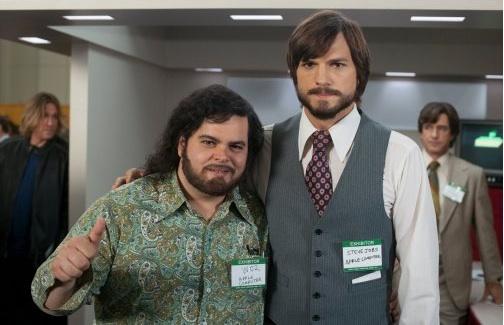 Web entrepreneur, tech journalist and SHS Alumni Rob Fishman previewed the new biopic "Job" starring Ashton Kutcher and posted the following review on The Daily Beast. The film is showing at multiple locations in Westchester this weekend. If you see it, let us know what you think.
Web entrepreneur, tech journalist and SHS Alumni Rob Fishman previewed the new biopic "Job" starring Ashton Kutcher and posted the following review on The Daily Beast. The film is showing at multiple locations in Westchester this weekend. If you see it, let us know what you think.
For those of us Same Thinkers, Hollywood's fascination of late with Silicon Valley is titillating. All that time whiled away on software, and rarely are we afforded a glimpse into the souls of those who manufacture it. The 2010 film The Social Network—to borrow a phrase popular with tech types—"opened the kimono" a bit on the industry. In that film, we met Mark Zuckerberg (Jesse Eisenberg), a programming wunderkind who talked fast but sold his schoolmates out even faster. Of all the friends to be had on Facebook, its founder seemed the least appealing.
The screenwriter, Aaron Sorkin, is now at work on his follow-up about the Apple visionary Steve Jobs. If Sorkin's as-yet uncast protagonist at all resembles his last, filmgoers will surely harden in their distaste for our reigning technocracy, seen to be high on IQ and low on compassion. What with biographer Walter Isaacson's characterization of his late subject—"frequently obnoxious, rude, selfish, and nasty to other people"—one worries how Jobs will play in Sorkin's hands.
Between that hard place and Isaacson's rock of a book Friday comes Jobs, Ashton Kutcher's indie biopic. The film has been widely panned and dismissed. The Guardian's Brian Moylan speculated that Jobs "would have taken a big steaming dump" on the picture. Apple co-founder Steven Wozniak has repeatedly disputed its veracity. Jobs, writes Mark Olsen, "feels curiously out of touch with its subject, both as a man and regarding his impact."
And yet, despite its shortcomings, Jobs is not so bad as its critics insist. In fact, it's not half-bad at all.
The film, directed by Joshua Michael Stern, spans the years between Jobs's failed enrollment at Reed College and his triumphal return to Apple some 20 years later. Save for the opening scene, Kutcher is happily spared any Benjamin Button–style makeovers, instead reprising a look that comes naturally to him: the shaggy hair and hippie vests of That '70s Show. This is not yet the Jobs of a hundred black turtlenecks.
The story gets off to clumsy start. Relevant backstory is condensed into a few lines of artless dialogue. Perambulating the college campus, "Steven" is implored by an unnamed professor, in a distracting cameo by James Woods, to stay in school. "I want to live the idea of art, not study it," Kutcher's Jobs replies.
Dropping acid soon after in a wheat field, as a Bach concerto crescendos, Jobs says aloud: "Who has a baby, then throws it away like it's nothing?"
"Are you talking about your birth parents?" his girlfriend asks.
Where the movie hits its stride is where Steve Jobs found his: in the creation and growth of Apple Computers. Filmmakers secured the actual Los Altos garage where Jobs grew up. Led by the sweet, unassuming, and ingenuous Woz (Josh Gad), a scrappy team of engineers does their best to make soldering motherboards look cool. After an angel investor shows up at their doorstep (Dermot Mulroney, as a forgettable Mike Markkula), Jobs strides through the West Coast Computer Faire to introduce the groundbreaking Apple II.
As his character ages, Kutcher's performance becomes more convincing than contrived. He certainly looks the part, nailing the Frankenstein gait, dexterous gestures, and California twang (Kutcher enlarges on his process here). Though he dons a jacket and tie, Jobs is never quite one of the suits—here, as in The Social Network, the stated enemy—at one point leveling an accusatory finger at Apple CEO John Sculley (Matthew Modine) and barking: "Hiring you was the worst mistake I ever made!"
When Jobs's spending spirals out of control, the suits have their revenge. Sculley, Markkula, and the company's board arrange an ouster that strips Jobs of his power. "I felt like I'd been punched, the air knocked out of me, and I couldn't breathe," Steve Jobs told Isaacson years later. By then, Woz has resigned, and Jobs is estranged from his girlfriend and their daughter together and is living in an unfurnished mansion, with only a poster of Albert Einstein watching over him.
Thus passes the first of two moments when someone on the board asks, "So what are we going to do?"
(Read the balance of the review here:)
Rob Fishman is a technology and media consultant in New York. Formerly the social media editor of the Huffington Post, he is a contributing editor at BuzzFeed, and has written for Slate, New York Magazine, Medium and other leading publications. A graduate of Cornell and Columbia's Graduate School of Journalism, he lives in New York.
Buying a Puppy: What You Should Consider
- Details
- Hits: 5097
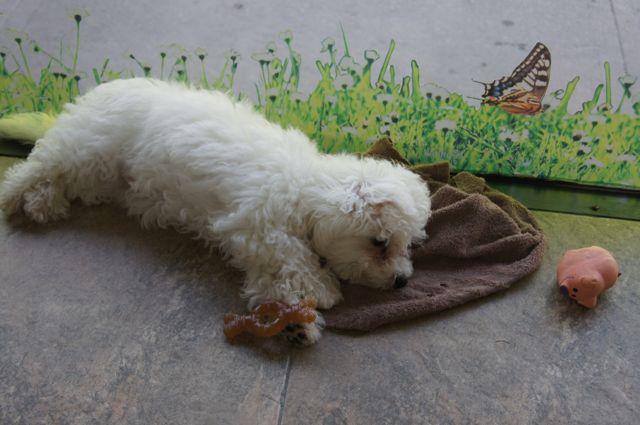 The opening of Scarsdale Puppy Shop on Weaver Street has made the issue of puppy mills and stores that buy from them a hot button issue again for area residents. In an effort to learn more about the puppies at Scarsdale Puppy Shop, we contacted the owner for some answers. We wanted to know, among other things, where the puppies came from, what happens to the unsold ones, and had he visited the breeding facilities. Despite a request for a sit-down, the owner informed us that on advice of counsel, he would not speak with anyone from Scarsdale10583.com. This begs the question: What is there to hide?
The opening of Scarsdale Puppy Shop on Weaver Street has made the issue of puppy mills and stores that buy from them a hot button issue again for area residents. In an effort to learn more about the puppies at Scarsdale Puppy Shop, we contacted the owner for some answers. We wanted to know, among other things, where the puppies came from, what happens to the unsold ones, and had he visited the breeding facilities. Despite a request for a sit-down, the owner informed us that on advice of counsel, he would not speak with anyone from Scarsdale10583.com. This begs the question: What is there to hide?
If you are considering buying from a puppy store or any other facility in the area, think about the following before you make your purchase.
1. Look at rescue organizations, animal welfare centers and reputable breeders first. Reputable breeders (as opposed to a commercial breeding entity) that breed responsibility with an animal's health and welfare in mind will insist on meeting prospective families face to face or, in this era of modern technology, Skype as an alternative if distance is a factor. A good breeder will ask for personal references and want pictures of your home and yard. If you are going to lay out $1,000 or more for a new family addition, wouldn't you want to know how many litters the breeder has bred and whether or not the sire and dam have been tested for heredity diseases? Bottom line: A reputable breeder won't sell to a store that sells puppies. No, never, end of story. Check out rescue organizations. There is a rescue group for practically every breed at every stage of life. You get to meet the animal many times on more than one occasion and spend time together to see if you are good match for each other. Plus you get the added bonus that the people who run rescue organizations are passionate about the animals under their care and know the animal's temperament well, helping to ensure that your new addition will fit in well with your family now -- and in the future.
2. No, you aren't saving a life if you buy from a store that sells puppies. Ever think what happens to the puppies that are not sold and are past the age of being "adorable?" The owner can't take home every unsold dog. In most cases, unsold puppies are returned to puppy brokers and then sent back to the puppy mills, where they are caged and forced to reproduce. In other cases unsold pets are dumped at local animal shelters where, if not adopted in a short time frame, they are euthanized. So, if you honestly believe you are doing some good by "rescuing" a puppy/dog/kitten/cat from a pet shop window, think again. Your money keeps the cycle alive and pumping out animals.
3. Don't think because NY State regulates pet dealers this ensures puppies have humane conditions in which to live. Consider this fact: the New York State Department of Agriculture and Markets (DAM) regulates pet dealers. According to the department's website, DAM's budget for 2011-12 was $166 million with $117,000 of that budget used to fund the division responsible for regulating pet stores. That division has one inspector for New York State covering 267 licensed pet stores. As a result, not enough funds and manpower are in place at the state level to regulate the operation of pet stores. New York is a big state – how could one inspector possibly make a difference?
4. A USDA license means almost nothing. According to Cori Menkin, senior director of ASPCA's Puppy Mills Campaign, "Consumers need to know that they should not be falsely reassured when a pet store tells them their puppies come from USDA licensed breeders." According to Menkin, "Unfortunately, USDA standards alone do not ensure that dogs are raised humanely in an environment in which they can thrive." If you are even considering buying from a pet store, check out ASPCA's http://nopetstorepuppies.com and see if you still feel the need to make a purchase at a pet store. Many of the photos on the website depict conditions commonly found in mills. The photos show not only conditions that violate federal law, but also conditions that are legal but that the ASPCA and the general public consider inhumane. The new database aims to educate consumers about where pet store puppies really come from by showing them what it looks like inside many USDA licensed facilities.
To write a balanced article, I wanted to include information on why buying from a puppy store is beneficial for the animals and their future families. The only argument I could come up with is that it is convenient. Drive up, park, pull out the plastic and drive away with your new best friend. Though I am sure that the puppies in Scarsdale Puppy Shop are well cared for and given the best available care, I believe the public has the right to know the true story behind those puppies in the window.
10 Things You Might Forget to Bring to College
- Details
- Written by Steven Friedman
- Hits: 5208
 With only about a month left until college move-in day for many incoming freshmen, the time has come to start getting serious about what we do and don't need during the upcoming year. Many schools send out suggested packing lists, and there are an abundance of them online. Listed below are a few useful items that they may leave out.
With only about a month left until college move-in day for many incoming freshmen, the time has come to start getting serious about what we do and don't need during the upcoming year. Many schools send out suggested packing lists, and there are an abundance of them online. Listed below are a few useful items that they may leave out.
1. Speakers
Depending on how much you love listening to music, whether in your room or in public with others, there might be some occasions where the built-in speakers in your phone or laptop just won't cut it. You don't have to buy a very expensive, top of the line set of speakers, but consider a small iHome (which also functions as an alarm clock) for your room.
2. Seat cushions
Your dorm room will contain a desk, and a desk chair. Wooden chairs can be pretty unforgiving, so consider bringing a cushion or even buying a comfortable alternative like an office chair with wheels. Even though you'll likely spend a lot of your work time in the library, don't neglect your room.
3. Tide to Go
When you've stained something and laundry day is nowhere in sight or you want to wear it again, just use Tide to Go. It's an instant stain remover that's sort of like a small marker. Just don't wear something in sunlight right after you use it.
4. Notebooks from high school
There's no need to bring every notebook or study guide from your four years of preparation for college, but if you're placing out of any classes, it couldn't hurt to have that safety net. Professors expect you to be a little rusty at Spanish or Calc, but it can't hurt to look over your old notes or tests (assuming you resisted the temptation to throw out, shred, rip up, or have a bon fire with everything from high school).
5. Fan and space heater
You won't know until you arrive at school whether your dorm room will be too hot or too cold. For the first few months you may need a fan to stay cool and after that you may want a space heater to keep warm. So consider bringing both.
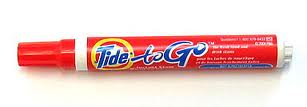 6. Underbed storage units
6. Underbed storage units
This may seem like an obvious one to some, as it's pretty hard to fit everything you're bringing into the school-provided furniture within your room. Girls will typically try to fit more into the same space. Even if you initially manage to squeeze in your stuff using space-saving storage systems if you don't have accessible areas to keep your things, your room will quickly end up a mess.
7. Agenda
You may have gotten by in high school without using the school-provided planner as keeping track of assignments wasn't too hard. And you might be able to use the same system day-to-day for classes in college. However, there will be more long-term assignments, and you'll have to keep track of your class schedule and exam dates and remember personal events and appointments. In short, no one will keep track of your schedule but you, so an agenda will help to keep things straight.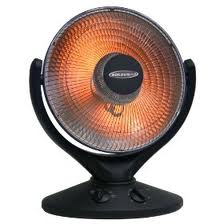
8. External hard drive
This is probably a smart idea in general, but it's especially useful in college. Losing everything you've worked on because your computer crashed or your laptop was stolen would be devastating, so back up your computer every once in a while. Also, an external hard drive is an easy way to share large amounts of music, as opposed to several CDs or multiple trips with a flash drive.
9. Starter decorations
It's a given that you'll have some form of decoration in your room, but have some at the beginning of the year. Make your room your own by bringing personal items that reflect your interests and who you are.
10. Mementos and photos
Everyone is excited to go to college, some more so to leave home than to actually arrive there. But whether you've loved your time here or hated it, whether you're sick to death of this town or loving every minute, you'll soon be missing it. Even if you want to remove yourself from the community as a whole, you'll realize that you'll miss your friends, your family, and home cooked meals. Bring photos to remember the good times you have had in Scarsdale.
Contributor Steven Friedman is a graduate of Scarsdale High School and will be attending Washington University in St. Louis as a freshman this fall.
Letter from Israel: How Far We've Come
- Details
- Written by Diana Bletter
- Hits: 3324
 This piece was submitted by Diana Bletter, formerly of Great Neck and now a resident of Israel: The Muslim holiday of Ramadan begins this year on July 9. Right before Ramadan began last year, I attended my first Muslim wedding ceremony of my friend, Amira. The wadah-elarus ceremony, or Farewell to the Bride, was held in Amira's family's courtyard in the village across from my house in Israel's Western Galilee. The all-female rite marks the end of a woman's life in her childhood home and her transition into her groom's household. Amira's ceremony gave me the chance to celebrate with her—and to be reminded of how grateful I am to be an American-born woman.
This piece was submitted by Diana Bletter, formerly of Great Neck and now a resident of Israel: The Muslim holiday of Ramadan begins this year on July 9. Right before Ramadan began last year, I attended my first Muslim wedding ceremony of my friend, Amira. The wadah-elarus ceremony, or Farewell to the Bride, was held in Amira's family's courtyard in the village across from my house in Israel's Western Galilee. The all-female rite marks the end of a woman's life in her childhood home and her transition into her groom's household. Amira's ceremony gave me the chance to celebrate with her—and to be reminded of how grateful I am to be an American-born woman.
When I arrived, there were about 100 women seated around the compound watching as Amira danced by herself in her long white wedding gown. Every so often, she dabbed her tears, making sure her make-up didn't run, and a sister-in-law whisked away her crumpled tissue, pressing a fresh one into her palm. In another hour, her bridegroom's family would come and take her away.
I've known Amira since I moved from Long Island to Israel in 1991. Unmarried and the youngest of eight, Amira, 41, seemed destined to be the designated daughter: the one who'd live with her elderly parents and take care of them forever. But in her large family clan, she was also the macher, the go-to person if you wanted anything done. Mornings, she managed the auto-repair shop of one brother; afternoons, she ran the endocrinology clinic of another brother; evenings, she raised the son of yet another brother, a widower.
Then, suddenly, Amira shocked everyone with the news that she was marrying Issam, a man she met through work. She told me that Issam's marriage to his distant cousin ended when she left him and their three children for a childhood sweetheart. The move was scandalous; their three children stayed with Issam, refusing to even speak to their mother. Issam searched for a new wife and after meeting Amira several times, he proposed and she accepted.
Now, Amira was having one last dance with friends and family before she switched loyalties to Issam's clan. A disc jockey played Arabic melodies spiked with a throbbing beat. Amira caught my eye and invited me to join her. I was wearing a gingham shirt, skinny jeans and ballet shoes – how could I blend in among the stiletto heels, long robes and hijabs? Dizzying nights at Studio 54 in the 1970s hadn't prepared me for this dance. Plus, I was the only Jewish woman there: I knew everyone would stare at me. Yet I couldn't sit this one out.
I made my way through the throng of women thinking about all the things I do that the women in the village would never do. Simple things, like riding a bike. My life was so different from theirs. I'd moved from Great Neck—a town with a reputation not unlike Scarsdale's—to live in Israel with my first husband and our four children. And then I recklessly fell in love with someone else. However, I never feared losing my kids or the condemnation of my community. And, because I grew up on "The Brady Bunch," I plunged into blending a new family with six kids, and unofficially adopting a seventh.
How could I not worry about Amira? She was sacrificing her relatively independent life to cook and clean for a man she barely knew, raising his kids under the watchful eye of a mother-in-law in a much more traditional village. Yet this might be Amira's last chance to have children and her own family. And then again, American women also fiercely debate if they can have it all. I suddenly understood that in Amira's society, this was the best choice that she could make. So I danced with her, trying to gracefully weave my fingers through the air, writing invisible blessings for Amira across the sky.
A short time later, the bridegroom's mother and sisters came through the gate, beating drums. Amira danced with them for a while and then it was time for her to go. She bent over her mother and kissed her good-bye with a grave finality I'd never seen on American brides' faces. Two of her brothers escorted her to an idling car that would take her to her husband waiting in his village 30 miles away.
The ceremony was over and I drove back across the road. "How was it?" my step-daughter asked when I got home.
"It was moving," I said. "It was—"
"Give me a kiss and then yap while you're making dinner," my husband, Jonny, said, half-joking. "I'm starving!"
I couldn't help laughing. I gave him a kiss and cooked dinner, feeling even more grateful when Jonny swept the floor and cleaned up. Sometimes all you have to do is cross the road to be reminded how far you've come—and how far so many women around the world still have to go.
Diana Bletter is the author of The Mom Who Took Off On Her Motorcycle (Kent & Cordell, 2013), available here from Amazon.














